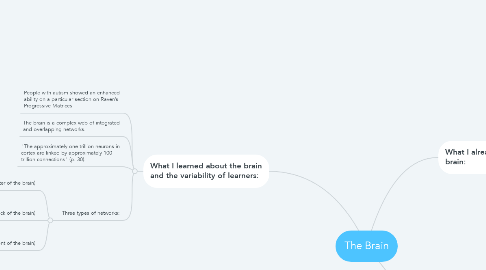The Brain
by Alison Kannal


1. What I learned about the brain and the variability of learners:
1.1. People with autism showed an enhanced ability on a particular section on Raven’s Progressive Matrices
1.2. The brain is a complex web of integrated and overlapping networks.
1.3. "The approximately one trillion neurons in cortex are linked by approximately 100 trillion connections" (p. 30).
1.4. Three types of networks:
1.4.1. Affective: (center of the brain)
1.4.1.1. monitor the internal and external environment to set priorities, to motivate, and to engage learning and behavior (p. 31).
1.4.2. Recognition: (back of the brain)
1.4.2.1. networks that sense and perceive information in the environment and transform it into usable knowledge (p. 31).
1.4.3. Strategic: (front of the brain)
1.4.3.1. networks that plan, organize, and initiate purposeful actions in the environment (p. 31).

